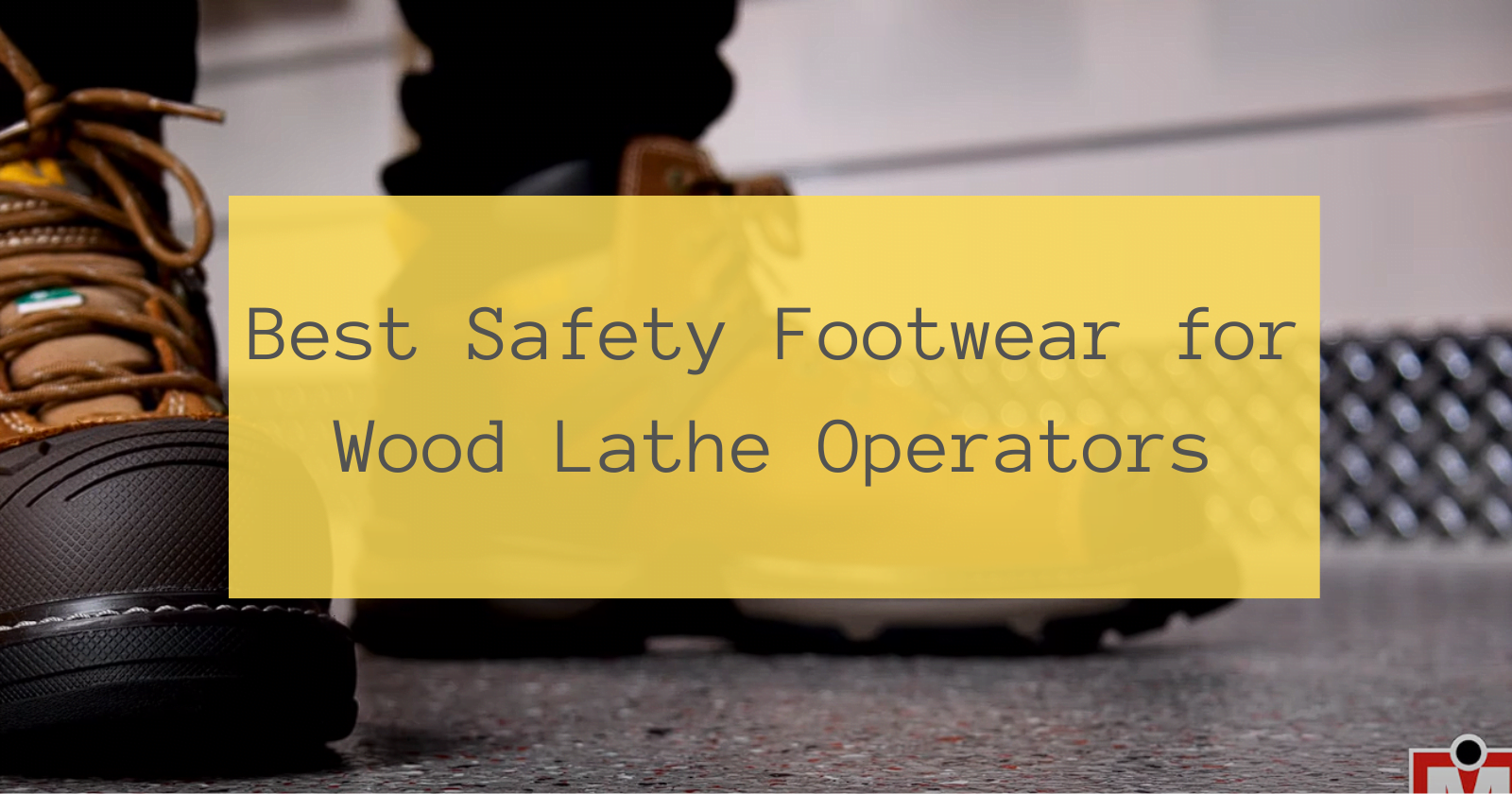Table of Contents
When choosing safety footwear for wood lathe operations, it’s essential to consider boots that offer strong ankle support, and steel-toe protection, and are made from durable materials to shield against sharp objects and heavy items. Slip-resistant soles are also crucial to prevent slips and falls on sawdust-covered workshop floors. While specific brands are not mentioned, features such as puncture-resistant soles, electrical hazard certification, and comfortable cushioning for long hours of standing should be prioritized. It’s recommended to look for footwear that meets or exceeds relevant safety standards such as ASTM or ISO for industrial safety footwear.
Key Takeaways
- Always prioritize safety when operating a wood lathe by understanding and being aware of potential hazards.
- Implement safety measures such as wearing appropriate footwear to protect against common hazards in the wood-turning environment.
- Choose safety footwear that meets the specific foot protection standards for wood lathe operators, ensuring the highest level of safety.
- Consider the ergonomics and comfort of the safety footwear to ensure long-term wearability and support during extended periods of wood lathe operation.
- Prioritize performance and durability when selecting safety footwear, as these factors contribute to the overall effectiveness and longevity of the protective gear.
- Look for specialized safety footwear features tailored to the unique challenges and risks wood lathe operators face.
Safety Footwear Selection
Right Footwear Choice
When selecting safety footwear for wood lathe operators, it’s crucial to consider the specific hazards in this environment. Look for footwear that offers protection against sharp objects, falling debris, and potential electrical risks. Prioritize comfort and durability to ensure long hours of wear without compromising safety.
For example, steel-toe boots protect against heavy objects or machinery parts that may accidentally fall on the operator’s feet. On the other hand, synthetic caps can offer lightweight protection while still meeting safety standards. When choosing between these options, assessing the level of risk and personal comfort preferences is essential.
It’s important to note that a well-fitted pair of safety footwear can significantly reduce the risk of foot injuries caused by accidental impacts or rolling objects in a wood lathe workshop setting.
Steel vs Synthetic Caps
Steel and synthetic caps have their advantages in terms of penetration protection. Steel caps provide robust resistance against punctures from nails or sharp tools commonly found in woodworking environments. Conversely, synthetic materials such as composite toe caps offer similar levels of protection with added benefits like non-conductivity and lighter weight.
Understanding these differences allows operators to make informed decisions based on their working conditions and individual requirements.
Material Comparison
When comparing materials used in safety footwear, considerations should include leather for its durability and breathability but also understanding its limitations regarding water resistance compared to modern synthetic materials like Gore-Tex or nylon mesh fabrics, which are more waterproof but less durable than leather.
The choice ultimately depends on balancing comfort, durability, and specific safety needs within a wood lathe operation context.
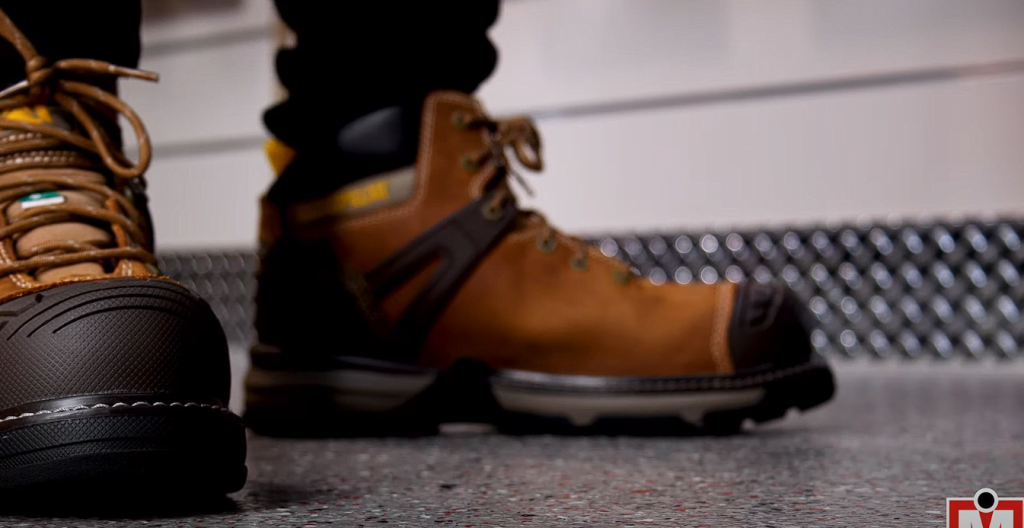
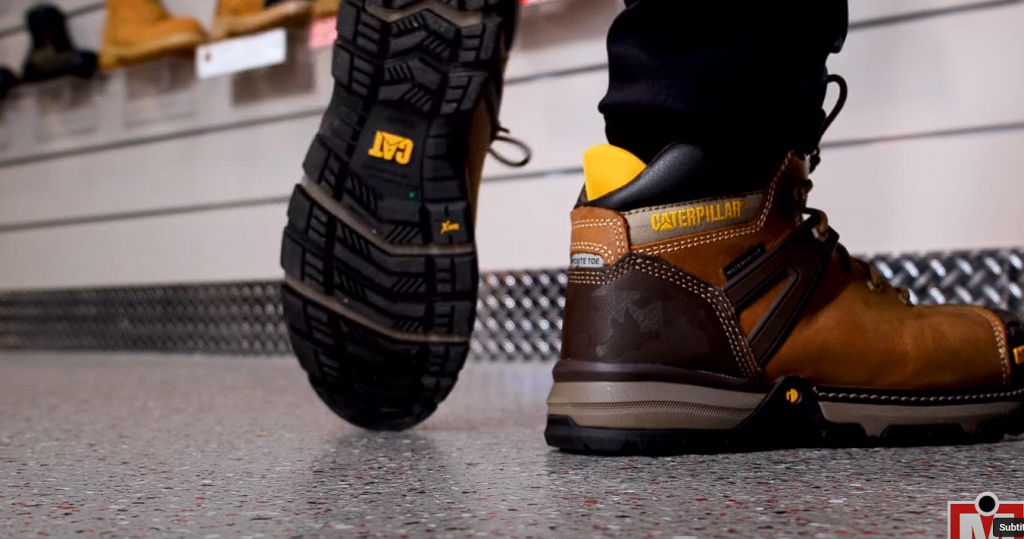

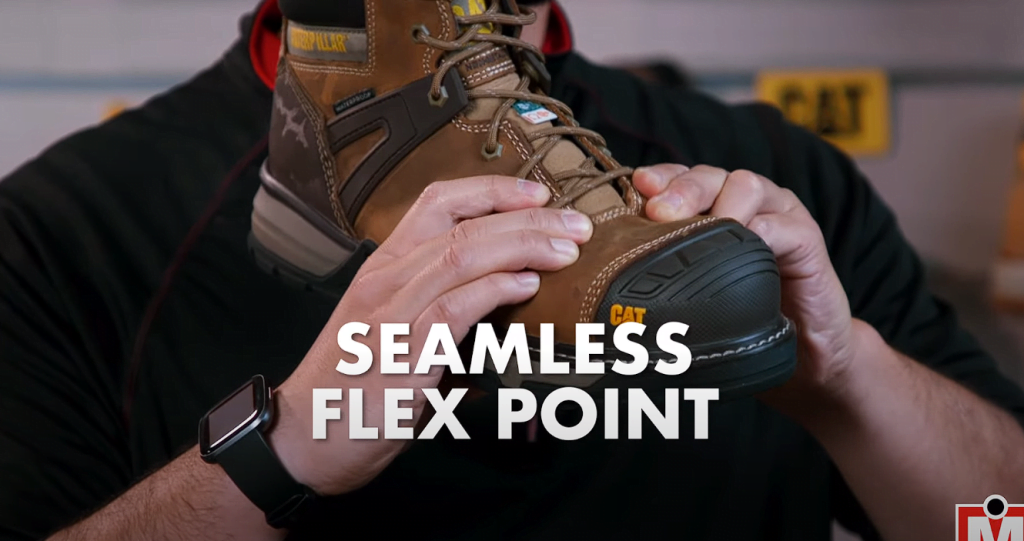
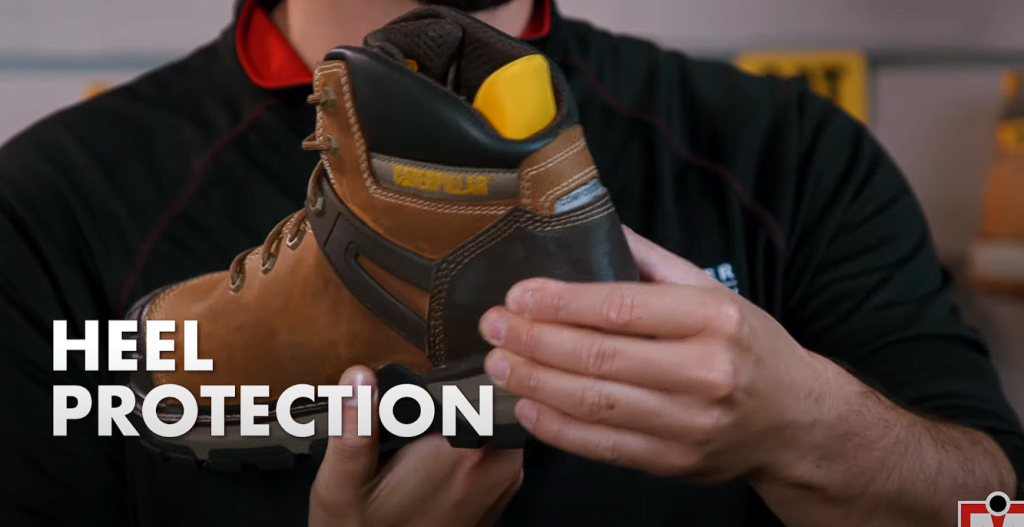
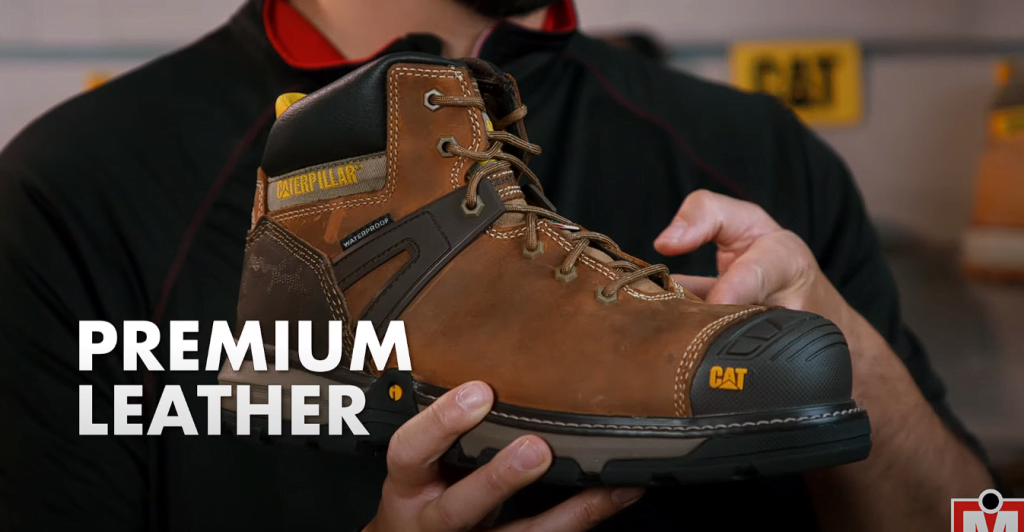
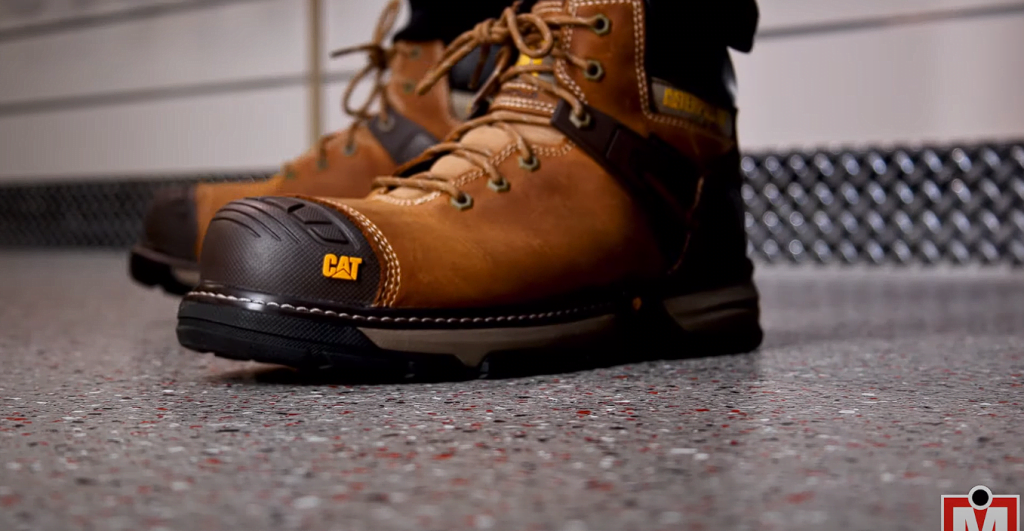
Foot Protection Standards
DGUV 112-191 Regulations
Understanding the DGUV 112-191 regulations is crucial for wood lathe operators to ensure safety. These regulations outline specific safety requirements, including those for protective footwear. When selecting safety footwear, it’s essential to consider the guidelines provided by DGUV 112-191 to guarantee compliance and maximum protection.
Compliance with DGUV 112-191 regulations involves choosing safety footwear that meets the specified standards for wood lathe operations. This may include reinforced toes, slip-resistant soles, and ankle support to mitigate potential hazards. Ensuring that the selected safety footwear adheres to these regulations is vital in safeguarding against common woodworking risks.
Personal insight: I find it helpful to thoroughly research and understand the DGUV 112-191 regulations before investing in safety footwear for wood lathe operations. Knowing that I am making an informed decision based on industry-specific standards gives me confidence.
OSHA Training Insights
Gaining insights into OSHA training programs related to wood lathe operations is instrumental in enhancing workplace safety. OSHA provides valuable training resources to educate wood lathe operators about potential hazards and best practices for injury prevention. Complying with OSHA guidelines and recommendations fosters a safe working environment and contributes to overall operational efficiency.
Participating in OSHA training programs equips wood lathe operators with practical knowledge, empowering them to effectively identify potential risks associated with woodworking machinery. By understanding the importance of OSHA training, individuals can prioritize their well-being while operating a wood lathe.
Ergonomics and Comfort
Ergonomic Fit Concepts
Safety footwear for wood lathe operators is crucial in ensuring comfort, stability, and overall safety during wood lathe operations. The significance of ergonomic fit cannot be overstated. Proper fit enhances comfort, reduces fatigue, and minimizes the risk of accidents or injuries.
Ergonomic design features such as cushioned insoles, arch support, and shock-absorbing midsoles are essential for promoting a better fit in safety footwear. These features provide comfort and help maintain stability while standing for long periods at the wood lathe.
It is vital to recognize that ill-fitting shoes can lead to discomfort, blisters, or even more severe foot problems over time. Therefore, choosing safety footwear with an ergonomic design tailored to the specific needs of wood lathe operators is paramount.
Protection Against Wear
Breathable features are crucial when selecting safety footwear for wood lathe operators. Ventilation technologies play a significant role in keeping feet cool and dry during long hours of operation. Choosing footwear with breathable properties helps prevent moisture build-up inside the shoes.
Furthermore, ankle twist prevention is another critical aspect of protection against wear. Ankle support features provide stability and reduce the risk of injuries caused by accidental twists or sprains during intense woodworking activities.
Performance and Durability
Anti-Wear Properties
Safety footwear for wood lathe operators must prioritize durability to withstand the demanding environment. The constant contact with wood, metal, and other materials necessitates recognizing the importance of anti-wear properties in safety footwear. Manufacturers utilize advanced materials such as reinforced leather, rubber compounds, or synthetic textiles to enhance durability and resistance to wear in safety footwear. These materials are designed to withstand abrasion from wood chips, sharp tools, and heavy machinery encountered in a woodworking environment.
Choosing safety footwear with excellent anti-wear properties ensures longevity and maintains optimal safety standards. By selecting shoes or boots that incorporate these features, wood lathe operators can minimize the need for frequent replacements due to premature wear and tear. This saves costs and ensures that workers are consistently protected by sturdy and resilient footwear.
Personal insight: I have found that investing in safety footwear with superior anti-wear properties has significantly extended the lifespan of my work shoes while providing peace of mind regarding their protective capabilities.
Comprehensive Slip Resistance
In addition to durability, slip-resistant features play a vital role in ensuring the safety of wood lathe operators. Understanding the significance of comprehensive slip resistance is essential when selecting appropriate safety footwear for this occupational setting. Different outsole designs incorporating deep treads or specialized patterns provide excellent traction on various surfaces commonly found in woodworking environments.
Wood lathe operators can effectively prevent slips, trips, and falls even when working around sawdust or wet areas by choosing footwear with comprehensive slip resistance. This feature is especially critical given the potential hazards of operating heavy machinery near slippery surfaces within a workshop environment.
To further enhance workplace safety
Specialized Footwear Features
Multiple Width Fit
Choosing safety footwear with multiple width options for wood lathe operators is crucial. Proper fit is essential for comfort and safety. Different foot widths require tailored footwear to ensure a snug yet comfortable fit, minimizing the risk of accidents. For example, individuals with wider feet may experience discomfort and potential hazards if their footwear is too narrow.
Moreover, specialized safety shoes designed to accommodate various foot widths provide an inclusive approach to ensuring the well-being of all wood lathe operators. By offering a range of width options, manufacturers prioritize the comfort and safety of individuals with different foot dimensions. This attention to detail enhances overall performance by reducing distractions caused by ill-fitting footwear.
It’s important to note that considering one’s foot width measurements when selecting safety footwear can significantly impact overall work satisfaction and productivity. I have found that having access to multiple width options allows me to choose a pair that fits perfectly, promoting better focus on my tasks while operating the wood lathe.
Ladies Fit Design
Recognizing the specific needs of female wood lathe operators, ladies’ fit design features in safety footwear are indispensable. Anatomical differences between men’s and women’s feet necessitate tailored designs for optimal comfort and protection during woodworking activities. These design elements include arch support, heel cushioning, and overall shoe structure catering to women’s feet.
Wood Lathe Hazards
Wood lathe operators face several risks when working with this equipment. The rotating nature of the lathe poses a significant danger, as well as the possibility of wood pieces breaking off and causing harm. Safe work practices. It’s crucial to recognize these potential hazards to prevent accidents and injuries.
Understanding the need to assess and mitigate risks in a wood lathe environment is essential for operator safety. By identifying common risks associated with wood lathe operations, such as entanglement or flying debris, operators can take proactive measures to minimize these dangers.
Personal protective equipment (PPE) is vital in mitigating risks for wood lathe operators. Wearing safety footwear designed specifically for this type of work is one way to reduce the risk of foot-related injuries. These specialized shoes are often equipped with reinforced toes and soles to provide added protection against heavy objects or sharp materials.
Safeguards Implementation
Implementing safety safeguards is critical for minimizing the risk of accidents while using a wood lathe. Operators should be trained to use emergency stop mechanisms effectively, ensuring quick shutdown in an emergency.
Protective measures, such as adjustable guards around the turning stock, can help prevent contact with moving parts during operation. Following recommended guidelines for safeguarding wood lathes ensures operators know the best practices for maintaining a safe working environment.
I always wear my steel-toed safety boots before operating any woodworking machinery like a wood lathe – it gives me peace of mind knowing my feet are protected from any potential hazards.
Safety Measures for Operators
Essential Precautions
Wood lathe operators must prioritize safe work practices to prevent accidents and injuries in the workshop. Adhering to safety guidelines specific to wood lathe operations is crucial. This includes always wearing appropriate personal protective equipment (PPE), such as safety footwear designed for wood lathe operators.
Following necessary precautions when working with a wood lathe machine is essential. By practicing safe operating techniques and being aware of potential dangers, operators can minimize the risk of accidents or injuries. Maintaining caution during wood lathe operations is vital for creating a secure working environment.
Operating Speed Lathe
When operating a speed lathe, it’s imperative to ensure that the machine is securely set up before use. Checking for stability and proper alignment of the components helps maintain a safe working environment in the woodturning workshop. Correctly positioning the lathe also contributes significantly to accident prevention.
Conclusion
Importance of Footwear
Wearing the proper safety footwear is crucial for wood lathe operators to prevent injuries and ensure workplace safety. The footwear should have slip-resistant soles, steel toe caps, and ankle support to protect against potential hazards.
Woodworking environments pose various risks, such as falling objects, sharp tools, and slippery surfaces. Therefore, operators must prioritize their safety by wearing appropriate footwear that meets the specific job requirements. Companies must enforce strict guidelines regarding protective gear, including specialized footwear. This ensures compliance with safety regulations and fosters a culture of prioritizing employee well-being.
Best Practices
Operators should inspect their footwear regularly for any signs of wear and tear. Replacing them if they show any signs of damage or deterioration is advisable to maintain adequate protection.
Furthermore, staying informed about the latest advancements in safety shoe technology can help operators make informed decisions when purchasing new footwear. For instance, knowing about new materials or features that enhance comfort and protection can be beneficial in choosing the most suitable option.
Final Remarks
In conclusion, selecting appropriate safety footwear for wood lathe operators is crucial in mitigating potential hazards. Understanding the risks associated with wood lathes, implementing safety measures, and adhering to foot protection standards are essential for operators’ well-being. Prioritizing ergonomics, comfort, and specialized features can enhance the overall performance and durability of the footwear.
It’s imperative to prioritize safety by investing in high-quality footwear that meets industry standards and provides adequate protection. By following these guidelines, wood lathe operators can significantly reduce the risk of foot-related injuries and work comfortably for prolonged periods. Remember, a proactive approach to safety safeguards against accidents and contributes to a more efficient and productive work environment.
Frequently Asked Questions
What are the potential hazards for wood lathe operators?
Wood lathe operators face hazards such as flying wood chips, entanglement with rotating parts, and sharp cutting tools. These can cause severe injuries if proper safety measures are not followed.
How can operators ensure their safety while using a wood lathe?
Operators should always wear appropriate safety gear, keep long hair and loose clothing secured, avoid wearing jewelry or gloves, and follow safe operating procedures to minimize the risk of accidents.
What criteria should be considered when selecting safety footwear for wood lathe operators?
When choosing safety footwear for wood lathe operators, factors such as slip resistance, toe protection against impact or compression, puncture resistance in the sole area, and comfort during prolonged standing should be carefully evaluated.
Are there specific standards that define foot protection requirements for industrial settings like woodworking shops?
Yes. Safety footwear used by woodworkers must comply with ASTM F2413-18 standards, which specify performance requirements for protective toe cap footwear to provide adequate protection against various workplace hazards.
What specialized features should wood lathe operators look for in their safety footwear?
Operators should prioritize features like metatarsal guards to protect the instep area from impact or compression injuries and anti-fatigue technology to reduce strain during long hours of standing at a wood lathe.
